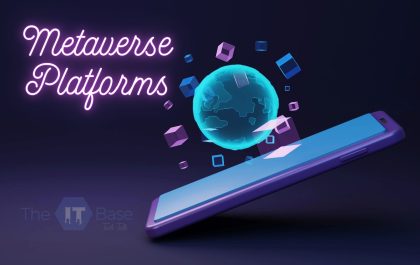Cyber-attacks — they’re a huge threat.
Despite being around even before the mainstream adoption of the internet, the cybersecurity industry is still a step behind cybercrime.
Cybersecurity breaches can cost businesses and governments trillions of dollars globally. And now that almost everything runs on the internet, there is a heightened sense of urgency for proactive cybersecurity solutions.
In this post, we’ll talk about 5 strategies that can allow organizations to be on the offensive.
Table of Contents
Cybersecurity: What it means to be proactive
Throughout the history of cybersecurity, targets employed a “reactive” approach when it comes to cybersecurity.
This can be broken down into three stages. Notice the attack, respond, and clean up the mess.
Sure, a reactive approach does enable organizations to stop cyber-attacks and get back to business as usual. But it has one glaring flaw: damage has already been done.
For a reactive response to work, a hacker needs to execute the actual breach and cause symptoms first. Only then will reactivate cyber defense protocols spring to action.
Proactive security fixes this by eliminating threats before they wreak havoc.
As a result, any damage to a company’s finances, IT infrastructure, and reputation can be successfully evaded.
Without further ado, here are some of the ways businesses can take a proactive stance against cyber threats:
1. Data risk analytics
A straightforward way to proactively defend against cyber-attacks is to use data risk analytics.
Using machine learning, a data risk analytics solution profiles the behaviors of systems and end users.
It establishes a baseline that identifies how digital assets are, under normal circumstances, accessed and used. Upon detecting behavior that’s out of the ordinary, the data risk analytics tool automatically sends an alert to the cybersecurity team.
This provides a number of benefits:
- Monitor and stop data breaches caused by human error
- Hasten incident response times
- Use signature-based detection tools to prevent attacks before they cause harm
With data risk analytics, you can also specify detection protocols that are tailored to an organization’s risk profile. This can help them reduce the likelihood of false positives and keep SOCs focused on real threats.
2. Continuous Security Validation
Even the most expensive cybersecurity solutions have holes that skilled hackers can slip through.
That’s why security teams utilize active validation practices like red teaming and penetration testing or “pentesting.” These strategies are essential components of a holistic cybersecurity audit.
The main drawbacks with these validation methods, however, are that they’re cumbersome to plan and expensive to deploy. They can also only be done periodically, which is disadvantageous in a rapidly-changing business environment.
After all, data from the most recent validation may become outdated and inaccurate before the next testing session.
Continuous Security Validation or CSV fixes the issues with traditional validation methods.
It works the same way as penetration testing—simulating real-world attacks and identifying weaknesses in an organization’s cybersecurity systems. The only difference is, CSV can be fully automated and is, as the name suggests, continuous.
CSV per se is not a solution for hunting down threats, cleaning up infections, or anything in between. Rather, its primary purpose is to stress test the effectiveness of a company’s existing cyber defense in averting real attacks.
This can help organizations map the attack surface and patch up vulnerabilities before real attacks occur.
Incorporating CSV in your cybersecurity comes with the following benefits:
- Shorter validation cycle always ensures up-to-date test results
- Automated CSV solutions are cheaper than red teaming or pentesting long-term
- Reputable CSV vendors use threat models from authoritative repositories like MITRE ATT&CK, Cyber Kill Chain, and NIST CSF
3. Use AI
There are several ways AI can be used to leverage proactive cybersecurity.
One example is AI-powered bot protection, which can preemptively detect and block malicious traffic from infiltrating a business network.
Bots can be used for various attacks like automated phishing emails, DDoS attacks, and data harvesting. However, there are also good bots used by search engines, analytics platforms, feed fetchers, and other legitimate actors.
AI can use trust networks with billions of identifiers to weed out bad bots from streams of traffic.
Other than that, AI can also be used for predictive threat hunting and vulnerability tracking.
4. Zero Trust security
The Zero Trust cybersecurity model is another proactive approach that assumes no one is trustworthy until proven otherwise.
It doesn’t matter if a device or user is a regular employee, guest, or from upper management. When connecting to an organization’s network, requests must be continuously verified—sometimes through numerous authentication steps for high-risk assets.
Implementations of Zero Trust require a set of technologies to work. Some examples are multifactor authentication systems, identity protection tools, and traditional endpoint security software.
Zero Trust security, however, can be tricky.
While it can help you set up and organize an airtight cybersecurity ecosystem, continuous verifications can disrupt day-to-day workflows.
Furthermore, the growing number of devices in workplaces exponentially increases the number of access points to authenticate. This makes Zero Trust significantly more time-consuming to set up and much harder to maintain.
Be sure to weigh the pros and cons and thoroughly deliberate over adopting the Zero Trust security model.
5. Instill cybersecurity awareness into your culture
Here’s a quick fact: 88% of cybersecurity breaches are caused by human error.
Phishing scams, misplaced storage devices, weak passwords, using unsecured networks—it’s unfortunate that the majority of breaches are preventable.
The problem is, most organizations fail to realize the importance of cybersecurity awareness in their workforce culture.
To turn this around, you need to plot an elaborate roadmap towards cybersecurity awareness. This can include the following steps:
- Invest in cybersecurity training programs and initiatives
- Roll out a password update policy with an emphasis on using strong passwords
- Encourage the use of offsite, encrypted backups
- Use a Virtual Private Network or VPN to secure remote connections
Conclusion
The time is now to take a proactive stand against the threat of cyber-attacks.
After all, an ounce of prevention is better than a pound of cure—especially with millions worth of data at risk.
Use the guide above to develop a proactive cybersecurity strategy on a step-by-step basis. Good luck and stay safe!
TheITbase
Related posts
Hot Topics
Metaverse Platforms for Virtual Workspaces
Ever felt like your office is stuck in the Stone Age? Tired of endless Zoom calls that feel about as…
IoT Protocols: The Language of Smart Devices
Ever wonder how your smart fridge talks to your phone? Or how does your fitness tracker know to buzz when…



